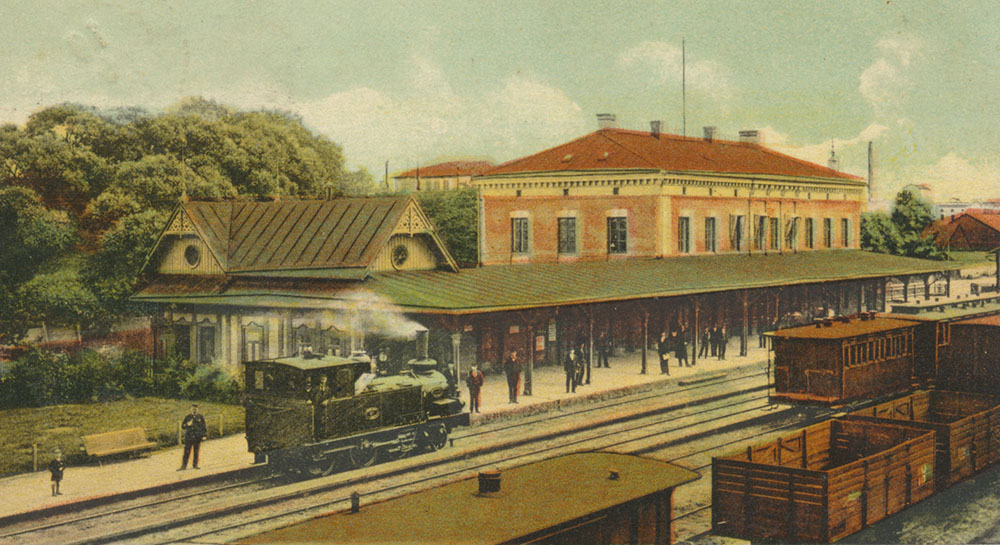
The spirit of the age: 1888–1913
At the turn of the century around 1900, Sweden experienced an economic golden age. The main political issues concerned national defense and suffrage. The emerging labor and women’s movements demanded more influence, and emigration to America hit record levels. The country was also shaken by the dissolution of the union with Norway.
The late 1800s and early 1900s in Sweden is known as the Oskarian era. The period is associated with conservative and national ideas as well as a strict moral code, and is sometimes compared to the Victorian era in England. Dressed in his royal mantle, King Oscar II represented the traditional power of the Swedish crown. His successor King Gustaf V, who reigned from 1907 to 1950, decided not to have a coronation. He was also the last Swedish monarch with any real political power.
One of the great disputes of the time was the union between Sweden and Norway. Many Norwegians were unhappy with the union, for several reasons. Norway had become a great seafaring nation and wanted its own consulates abroad, for example. The situation escalated into a political crisis. Norway’s government and parliament announced a referendum, which was not officially recognized by Sweden. The result showed overwhelming support for dissolving the union. The countries were on the brink of war until negotiations finally diffused the situation. On October 26, 1905, Sweden acknowledged Norway’s independence.
The question of Sweden’s defense caused further political unrest in the country. The liberals wanted to disarm the military, while the conservatives were in favor of increasing the allocated budget. The conflict culminated in the so-called courtyard crisis in the winter of 1914, a constitutional conflict between King Gustaf V and the liberal prime minister Karl Staaff. It ended with the government’s resignation. At the same time, there was an arms race among the European superpowers. Six months later, the First World War erupted.
Liberal and socialist ideas spread fast through the growing number of popular movements. The early days of the labor movement, which started to take shape in the 1860s and 1870s, was heavily influenced by liberal ideas. It also had close ties to both liberal politicians and the revivalism movement. The workers’ associations that were set up in several cities wanted to boost education levels and facilitate self-help.
Smith called himself a liberal and was decidedly anti-socialist. Inspired by examples in Europe, he created workers’ groups that sought good deals with private retailers. He also set up so-called steam kitchens. Based on a German model, steam kitchens were public restaurants owned and operated by the workers themselves. After the catastrophic Sundsvall fire in 1888, Smith donated a steam kitchen to the city as emergency aid.
Smith’s initiatives were not appreciated by everyone. The temperance movement criticized the connection to the spirits industry, and the socialist labor movement was against the top-down hierarchy. Although nothing concrete came out of the workers’ groups, they can be seen as an early version of the cooperative.
The socialist labor movement kept growing during the 1880s and 1890s, when the Social Democratic Labor Party and the Swedish Trade Union Confederation (Landsorganisation) were formed. One of the most important political issues for the socialists concerned suffrage. This topic was also a priority for the liberals, and to some extent for the conservatives.
The new women’s movement, which enjoyed broad support from left to right, campaigned for female suffrage. Somewhat unexpected, it was the conservative prime minister Arvid Lindman who introduced general and equal voting rights for men. Voting rights for women were not implemented until after the First World War.
Sweden’s economy followed international trends. During the 1870s and 1880s, a deep recession hit the country. Sweden introduced rationalization and many small companies had to close. They were replaced by large corporations, cartels and business collaborations. The recession was followed by an economic boom in the 1890s, which lasted until the First World War. During this golden age Stockholm hosted two major exhibitions, one in 1897 and one in 1909. This is also when a number of prestigious buildings were constructed in Stockholm, including the apartments on Strandvägen, the Royal Opera and the Royal Dramatic Theater. The general standard of living improved, but at the same time the gap between the rich and the poor grew. A record number of Swedes emigrated to America in search for a better life. During this time, Chicago even became the largest Swedish city in the world after Stockholm.